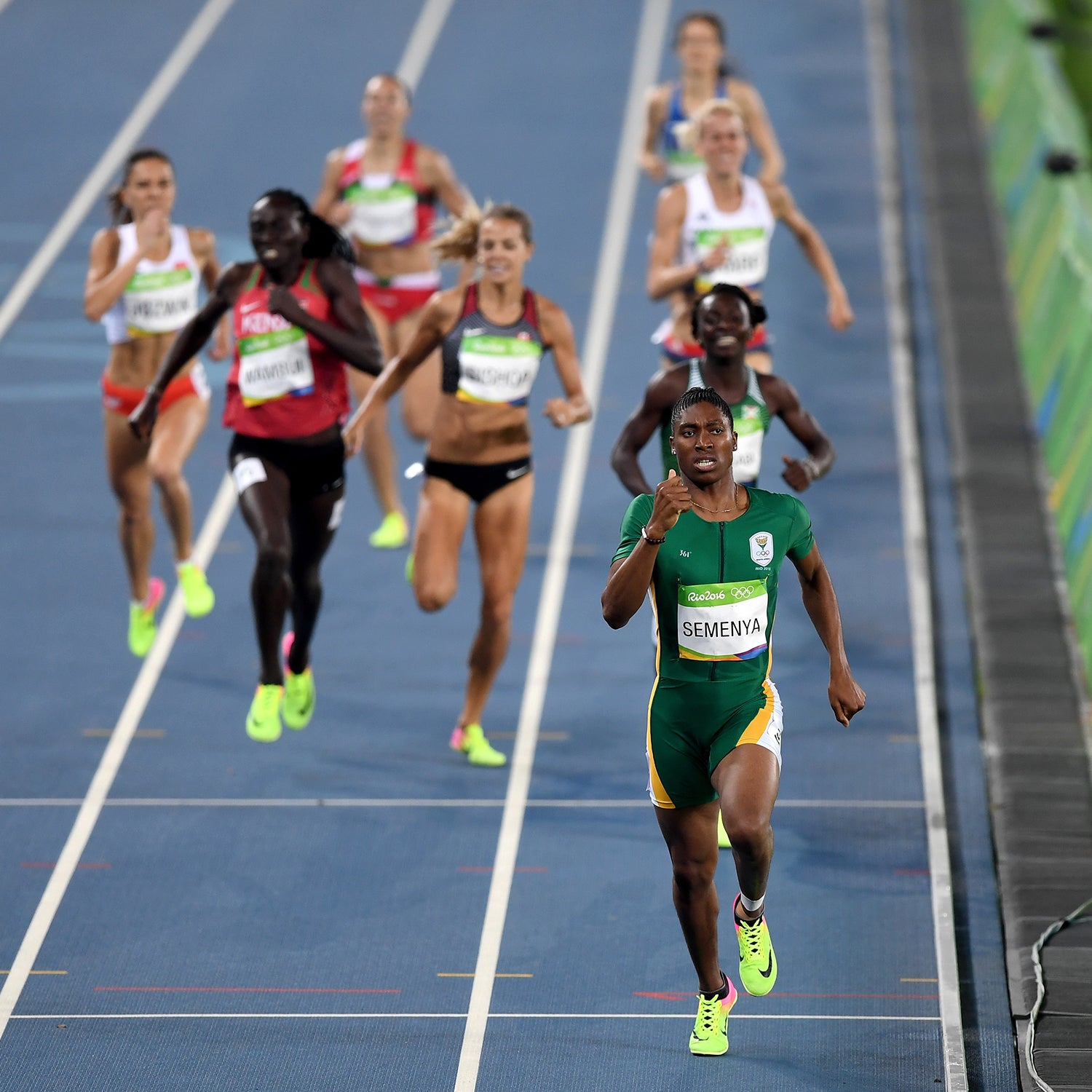Last April, the International Association of Athletics Federations (IAAF) that it would be implementing new eligibility regulations for female athletes with unusually high levels of natural testosterone. The decision has been predictively divisive; in the days after it was announced, the New York Times, for example, published op-eds by women both and the new regulations.
As it stands, the controversial new rules (described in greater detail here) are slated to go into effect on November 1 and will impact hyperandrogenic women wishing to compete internationally in events from the 400-meters up to, and including, the mile.��Once they go into effect, the new rules will require female athletes over the prescribed testosterone limit of 5 nmol/L to reduce their T levels if they wish to compete in the female category.
That is, if they go into effect at all.
Over the past few weeks, several events have put the new regulations in jeopardy. In June, Caster Semenya, the South African 800-meter runner who is widely believed to have inspired the IAAF to update its policy, filed a request with the Court of Arbitration for Sport (CAS) asking that the judicial body “declare such regulations unlawful and to prevent them from being brought into force.”��
Meanwhile, last week, the Women’s Sports Foundation (WSF) published ��condemning the IAAF for continuing the “invasive surveillance and judgment of women’s bodies that have long tainted women’s sport.”��
Finally, the 2017 British Journal of Sports Medicine (BJSM) that the IAAF has used to justify its recent regulations has now come under heavy criticism for using bogus data.��
If you’ve missed the bus on these latest developments, here’s a quick primer on where things stand.
Didn’t CAS already issue a ruling on this subject?��
Indeed. This isn’t the first time that the IAAF implemented an upper limit on female athlete testosterone levels; went into effect in 2011. In 2015, however, that policy was suspended for two years when Indian sprinter Dutee Chand through CAS, on the grounds that the IAAF needed more evidence. ��
A crucial difference between the IAAF’s latest testosterone rule and the initial 2011 iteration is that the new policy only applies to five specific events (400, 400 hurdles, 800, 1,500, and the mile). Since Dutee Chand competes exclusively in the 100 and 200-meters, and is therefore unaffected by the new rule, it appears that her initial CAS challenge is rendered moot. Adille Sumariwalla, the head of the Athletics Federation of India, has even because it doesn’t affect Chand and could benefit other Indian athletes like Tintu Luka, the nation’s top female 800-meter runner.��
Even though she was at the center of many debates surrounding the IAAF testosterone rules, Caster Semenya has not previously taken legal action against them. .��
“I don’t like talking about this new rule,” Semenya said in a statement. “I just want to run naturally, the way I was born. It is not fair that I am told I must change.��It is not fair that people question who I am.” She added: “I am Mokgadi Caster Semenya. I am a woman and I am fast.”��
How significant is the letter from the women’s sports foundation?
Significant enough that the IAAF felt compelled to issue this week.
In a sense, the exchange between the WSF and the IAAF gets to the heart of why this has been such a contentious subject. One side argues that it is effectively a human rights abuse issue, while the other maintains that it’s solely a matter of creating fair standards of athletic competition. ��
“What is at stake here is far more than the right to participate in a sport,” the WSF letter states. “Women’s bodies, their wellbeing, their ability to earn a livelihood, their very identity, their privacy and sense of safety and belonging in the world, are at imminent risk.”
In its response, the athletics governing body was adamant that: “The IAAF seeks only to maintain a fair and meaningful category for women to compete in athletics. It makes no judgment about gender or sexual identity.”
It’s difficult to see how telling certain women that they can’t compete in the female category on the grounds that their naturally occurring testosterone is too high wouldn’t be a judgement on their gender or sexual identity. Nevertheless, the IAAF insists that if it is going to have separate categories for male and female athletes, it needs to have some way to define them. Whether or not T-levels are the best way to do it, , at best.
What was wrong with the BJSM study?
In April, three independent researchers (Erik Boyle, Roger Pielke Jr., and Ross Tucker,) requested access to the data that had been used in the study upon which the IAAF was basing its decision. The researchers did this because they were unable to reproduce the study’s findings from the data that was publicly available. (Both data sets were taken from the results of the and IAAF Athletics World Championships.)
After Boyle, Pielke Jr., and Tucker were eventually supplied with the information they had requested, they found several problems with the data set. In some instances, and contrary to the study’s stated methodology, multiple times were listed for the same athlete. In other cases, the same results were used more than once. Finally, there appeared to be some instances of “phantom times,” i.e. results that couldn’t be matched with any specific athlete. In the four events that are the focus of the IAAF’s new regulations (those are the 400, 400 hurdles, 800, and the 1,500; the mile isn’t an event at the World Championships and therefore no data was available), the researchers found that bogus figures constituted between 17 and 33 percent of the data set.
Based on these discrepancies, Tucker, Pielke Jr. and Boyle co-authored ��calling for the BJSM study to be retracted.��
Interestingly, the BJSM published an updated version of its study on July 7, which addresses some of the data errors. However, Ross Tucker has that the new data still doesn’t add up.��
If the BJSM study is retracted, how damaging is that for the new IAAF rule?
In a word: very. Even if the updated version of the BJSM study, which according to Ross Tucker has eliminated 220 data points from the first version, is deemed scientifically sound, the fact remains that the IAAF’s new testosterone policy was based on the obviously flawed first version. When it announced its new policy in April, the IAAF claimed to have a “broad medical and scientific consensus” supporting its decision, but the BJSM study is clearly the scientific bedrock upon with the policy was based.
Last week, the New York Times published ��in which Dr. Stephane Bermon, a medical consultant for the IAAF who co-authored the study, is quoted saying that the aforementioned statistical errors “do not have significant impact on the final outcomes and conclusions of our study.” Nevertheless, as the Times article makes clear, Semenya’s legal challenge will be significantly bolstered by the latest development.
��“If I was on Semenya’s team, this would be among the best news I could receive,” Tucker told the Times.��
It’s significant that it is Tucker, of all people, who is making this point. After all, he has stated that he believes that the IAAF is “trying to do the right thing” and has been in favor of implementing a T-level limit for female athletes. The quandary, as Tucker sees it, is that there may be no ethical way to definitely prove the degree of the advantage conferred by atypically high levels of testosterone without specifically singling out athletes with so-called “differences in sexual development” for testing.��
Or as Tucker put it on Twitter:��
If we are indeed at an “impasse” on this issue, perhaps we need to find another solution to an admittedly complex problem.��


